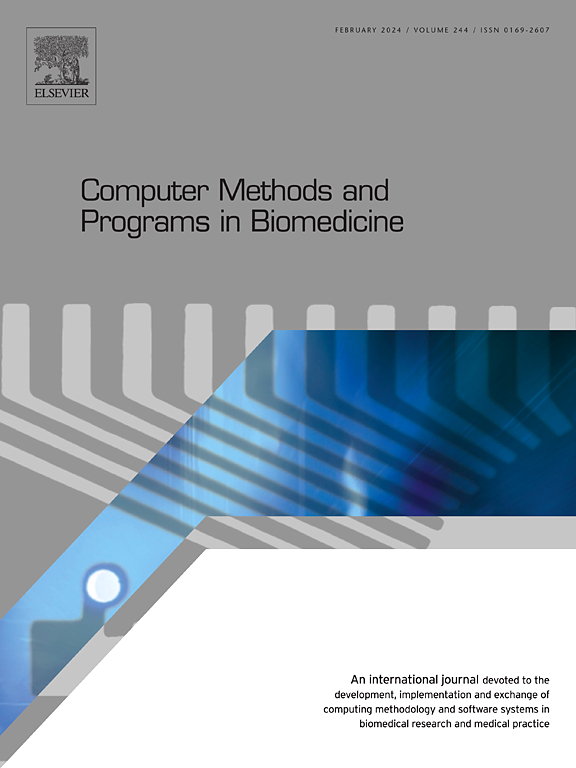Predicting protein-protein interaction with interpretable bilinear attention network
IF 4.9
2区 医学
Q1 COMPUTER SCIENCE, INTERDISCIPLINARY APPLICATIONS
引用次数: 0
Abstract
Background and Objective
Protein-protein interactions (PPIs) play the key roles in myriad biological processes, helping to understand the protein function and disease pathology. Identification of PPIs and their interaction types through wet experimental methods are costly and time-consuming. Therefore, some computational methods (e.g., sequence-based deep learning method) have been proposed to predict PPIs. However, these methods predominantly focus on protein sequence information, neglecting the protein structure information, while the protein structure is closely related to its function. In addition, current PPI prediction methods that introduce the protein structure information use independent encoders to learn the sequence and structure representations from protein sequences and structures, respectively, without explicitly learn the important local interaction representation of two proteins, making the prediction results hard to interpret.
Methods
Considering that current protein structure prediction methods (e.g., AlphaFold2) can accurately predict protein 3D structures and also provide a large number of protein 3D structures, here we present a novel end-to-end framework (called PPI-BAN) to predict PPIs and their interaction types by integrating protein sequence information and 3D structure information. PPI-BAN uses one-dimensional convolution operation (Conv1D) to extract the protein sequence features, employes GeomEtry-Aware Relational Graph Neural Network (GearNet) to learn protein 3D structure features, and adopts a deep bilinear attention network (BAN) to learn the joint features between one protein sequence and its 3D structure. The sequence features, structure features and joint features are concatenated to fed into a fully connected network for predicting PPIs and their interaction types.
Results
Experimental results show that PPI-BAN achieves the best overall performance against other state-of-the-art methods.
Conclusions
PPI-BAN can effectively predict PPIs and their interaction types, and identify the significant interaction sites by computing attention weight maps and mapping them to specific amino acid residues.
用可解释双线性注意网络预测蛋白质-蛋白质相互作用
背景与目的蛋白质-蛋白质相互作用(PPIs)在许多生物过程中起着关键作用,有助于了解蛋白质的功能和疾病病理。通过湿法实验方法鉴定PPIs及其相互作用类型是昂贵且耗时的。因此,人们提出了一些计算方法(如基于序列的深度学习方法)来预测ppi。然而,这些方法主要关注蛋白质的序列信息,而忽略了蛋白质的结构信息,而蛋白质的结构与其功能密切相关。此外,目前引入蛋白质结构信息的PPI预测方法使用独立的编码器分别从蛋白质序列和结构中学习序列和结构表征,而没有明确学习两种蛋白质重要的局部相互作用表征,使得预测结果难以解释。方法考虑到现有的蛋白质结构预测方法(如AlphaFold2)可以准确预测蛋白质的三维结构,并提供大量的蛋白质三维结构,本文提出了一种新的端到端框架(称为PPI-BAN),通过整合蛋白质序列信息和三维结构信息来预测PPIs及其相互作用类型。PPI-BAN采用一维卷积运算(Conv1D)提取蛋白质序列特征,采用几何感知关系图神经网络(GearNet)学习蛋白质三维结构特征,采用深度双线性注意网络(BAN)学习单个蛋白质序列与其三维结构之间的联合特征。将序列特征、结构特征和关节特征串联成一个全连接网络,用于预测ppi及其相互作用类型。结果实验结果表明,与其他最先进的方法相比,PPI-BAN的综合性能最好。结论sppi - ban可以有效预测PPIs及其相互作用类型,并通过计算注意权图并将其映射到特定的氨基酸残基上,识别出重要的相互作用位点。
本文章由计算机程序翻译,如有差异,请以英文原文为准。
求助全文
约1分钟内获得全文
求助全文
来源期刊

Computer methods and programs in biomedicine
工程技术-工程:生物医学
CiteScore
12.30
自引率
6.60%
发文量
601
审稿时长
135 days
期刊介绍:
To encourage the development of formal computing methods, and their application in biomedical research and medical practice, by illustration of fundamental principles in biomedical informatics research; to stimulate basic research into application software design; to report the state of research of biomedical information processing projects; to report new computer methodologies applied in biomedical areas; the eventual distribution of demonstrable software to avoid duplication of effort; to provide a forum for discussion and improvement of existing software; to optimize contact between national organizations and regional user groups by promoting an international exchange of information on formal methods, standards and software in biomedicine.
Computer Methods and Programs in Biomedicine covers computing methodology and software systems derived from computing science for implementation in all aspects of biomedical research and medical practice. It is designed to serve: biochemists; biologists; geneticists; immunologists; neuroscientists; pharmacologists; toxicologists; clinicians; epidemiologists; psychiatrists; psychologists; cardiologists; chemists; (radio)physicists; computer scientists; programmers and systems analysts; biomedical, clinical, electrical and other engineers; teachers of medical informatics and users of educational software.
 求助内容:
求助内容: 应助结果提醒方式:
应助结果提醒方式:


